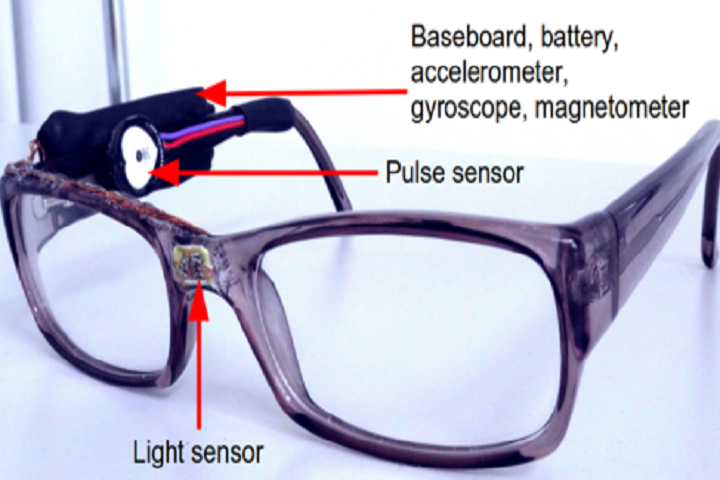
Considering the amazing things that technology can already do, and how quickly it’s advancing, I’ve assumed that eventually someone will come up with some kind of a device that can detect the number of calories a person ingests. As it turns out, someone has. Professor Oliver Amft from the University of Passau has developed a pair of smart eyeglasses that utilize electromyography to determine just what it is you’re eating, and how much of it.
Electromyography (EMG) is a technique that measures the electrical activity generated by muscles. It’s commonly used as a diagnostic tool to assess the health of muscles and nerves, but in this case, it’s being used to detect how hard the muscles in your jaw are working when you’re chewing. Dr. Amft developed a series of tiny sensors and embedded them in a 3D printed glasses frame – more specifically, in the arms of the frame, which touch the sides of the wearer’s face. The sensors pick up the electrical activity generated by the muscles of the jaw while the wearer is chewing, and thus can detect how hard those muscles are working – telling the sensors what type of food you’re masticating.
It’s not a perfect science – while the sensors can tell the difference between, say, a banana and celery, they’re less able to distinguish between foods of similar consistencies. The device is still just a prototype, though, part of a larger project called WISEglass. Dr. Amft and his fellow researchers are working to develop regular eyeglasses with embedded sensor technology that can detect different activities the wearer is performing, such as reading or walking. A light sensor can also detect the blue light emitted from screens, which can interfere with the sleep cycle; if the wearer is getting too much screen time late in the evening, the sensor sends a notice to their smartphone telling them they should power down if they want to ensure a restful night’s sleep.
The University of Passau’s research was presented earlier this month at the International Conference on Wearable and Implantable Body Sensor Networks, and will soon be published in a paper entitled “Diet eyeglasses: Recognising food chewing using EMG and smart eyeglasses.” Hmmmm…quite an idea! Would you be interested in a pair of these? Tell us over in the 3D Printed Smart Eyeglasses forum at 3DPB.com.
